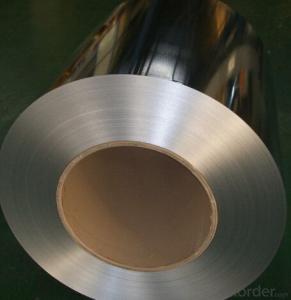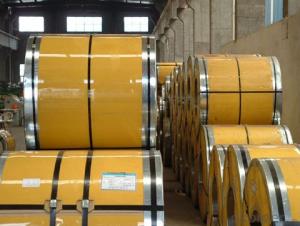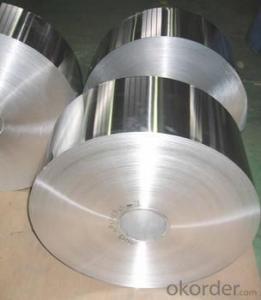Chinese Hot-dip Zinc Coating Steel Building Roof Walls
- Loading Port:
- Tianjin
- Payment Terms:
- TT OR LC
- Min Order Qty:
- 56 m.t.
- Supply Capability:
- 22222 m.t./month
OKorder Service Pledge
OKorder Financial Service
You Might Also Like
1.Structure of Hot-Dip Galvanized Steel Sheet Description:
Hot-dip galvanized steel coils are available with a pure zinc coating through the hot-dip galvanizing process. It offers the economy, strength and formability of steel combined with the corrosion resistance of zinc. The hot-dip process is the process by which steel gets coated in layers of zinc to protect against rust. It is especially useful for countless outdoor and industrial applications. Production of cold formed corrugated sheets and profiles for roofing, cladding, decking, tiles, sandwich walls, rainwater protective systems, air conditioning duct as well as electrical appliances and engineering.
2.Main Features of the Hot-Dip Galvanized Steel Sheet:
• Excellent process capability
• Smooth and flat surface
• Workability, durability
• Excellent anticorrosive property
• High strength
• Good formability
• Good visual effect
3.Hot-Dip Galvanized Steel Sheet Images

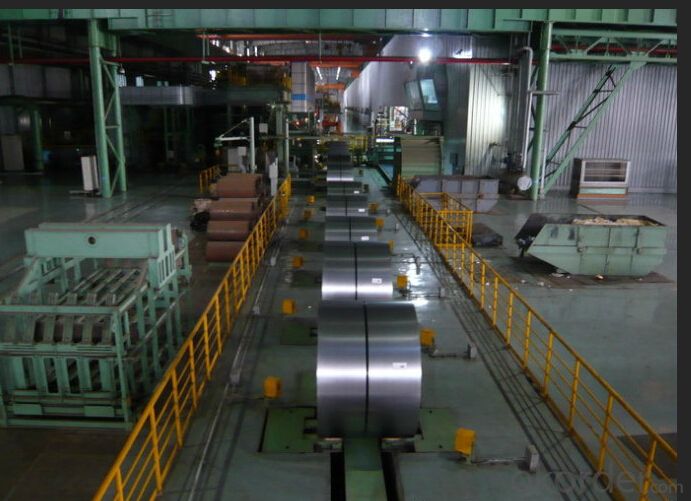
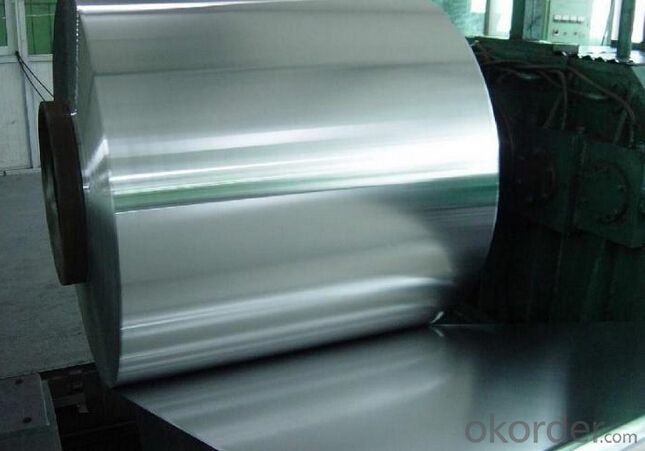
4.Hot-Dip Galvanized Steel Sheet Specification
Standard: ASTM, JIS,EN
Grade: CS, DX51D+Z,SGCC, SS 230~550,S220GD+Z~S550GD+Z, SGC340~SGC570
Thickness: 0.1mm~5mm
Width: max 2000mm
Coil weight:3-12 MT
Coil ID:508/610mm
Surface structure: zero spangle, regular spangle or minimum spangle
Surface treatment: Chromate treatment, Oiled/dry, skinpassed/non-skinpassed
Packing: Standard seaworthy export package
Technology test results:
Processability | Yield strength | Tensile strength | Elongation % | 180°cold-bending |
Common PV | - | 270-500 | - | d=0,intact,no zinc removal |
Mechanical interlocking JY | - | 270-500 | - | d=0,intact,no zinc removal |
Structure JG | >=240 | >=370 | >=18 | d=0,intact,no zinc removal |
Deep drawn SC | - | 270-380 | >=30 | d=0,intact,no zinc removal |
EDDQ SC | - | 270-380 | >=30 | d=0,intact,no zinc removal |
5.FAQ of Hot-Dip Galvanized Steel Sheet
We have organized several common questions for our clients,may help you sincerely:
1.How about your company?
A world class manufacturer & supplier of castings forging in carbon steel and alloy steel,is one of the large-scale professional investment casting production bases in China,consisting of both casting foundry forging and machining factory. Annually more than 8000 tons Precision casting and forging parts are exported to markets in Europe,America and Japan. OEM casting and forging service available according to customer’s requirements.
2.How to guarantee the quality of the products?
We have established the international advanced quality management system,every link from raw material to final product we have strict quality test;We resolutely put an end to unqualified products flowing into the market. At the same time, we will provide necessary follow-up service assurance.
3. How long can we receive the product after purchase?
Usually within thirty working days after receiving buyer’s advance payment or LC. We will arrange the factory manufacturing as soon as possible. The cargo readiness usually takes 15-30 days, but the shipment will depend on the vessel situation.
- Q:What are the different steel strip rolling processes?
- There are three main steel strip rolling processes: hot rolling, cold rolling, and warm rolling.
- Q:How do steel strips contribute to chemical resistance in various applications?
- The chemical resistance of various applications is enhanced by the use of steel strips, thanks to their inherent properties and protective coatings. Firstly, steel is renowned for its incredible strength and durability, thus rendering it suitable for handling harsh chemicals. It can endure mechanical stress and preserve its structural integrity, even in aggressive surroundings. Moreover, steel strips can be coated with a variety of materials to enhance their chemical resistance. One common coating method is galvanization, which involves applying a layer of zinc to the steel. This zinc layer acts as a sacrificial barrier, shielding the underlying steel from corrosion caused by chemicals. Another option for coating is the use of polymeric coatings, which provide a barrier against chemical attacks and can be customized to suit specific applications. Furthermore, steel strips can be designed with specific alloy compositions to improve their chemical resistance. For instance, stainless steel strips contain chromium, which forms a passive oxide layer on the surface. This protective layer prevents corrosion and offers resistance against a wide range of chemicals. Steel strips play a vital role in various industries where chemical resistance is paramount. In the chemical processing industry, they are utilized in equipment such as tanks, pipes, and valves, which must withstand corrosive substances. The automotive industry also relies on steel strips for components that come into contact with fuels, oils, and various chemicals. Additionally, the construction industry utilizes them for structures exposed to aggressive environments, such as bridges and offshore platforms. In conclusion, steel strips contribute to chemical resistance in diverse applications due to their inherent properties, protective coatings, and alloy compositions. They provide strength, durability, and resistance against corrosion, making them indispensable in industries concerned with exposure to harsh chemicals.
- Q:How to distinguish cold strip steel and cold rolled silicon steel sheet by simple and practical methods?
- If it is 0.5, you can see the coating, the silicon steel sheet is coated, cold rolling is not.
- Q:How are steel strips processed for crimping?
- Steel strips are processed for crimping through a series of steps to ensure that they are properly prepared for the crimping process. First, the steel strips are typically cleaned to remove any dirt, oil, or other contaminants that may be present on the surface. This is done to ensure that the crimping process can be carried out without any issues. After cleaning, the steel strips are then typically fed through a crimping machine. The crimping machine is designed to shape the steel strips into the desired form by applying pressure and creating a series of folds or ridges along the length of the strip. The specific pattern and depth of the crimps may vary depending on the intended application and requirements. During the crimping process, it is important to maintain consistent pressure and alignment to ensure that the steel strips are properly shaped. This is typically achieved through the use of precision machinery and skilled operators who can monitor and adjust the process as needed. Once the crimping process is complete, the steel strips may undergo further processing steps depending on the specific application. This may include additional cleaning, surface treatment, or coating to enhance the performance or appearance of the finished product. Overall, the process of steel strip crimping involves cleaning the strips, feeding them through a crimping machine, maintaining consistent pressure and alignment during the crimping process, and potentially carrying out additional processing steps as needed. This ensures that the steel strips are properly prepared and shaped for their intended use.
- Q:Can steel strips be used in the production of storage tanks?
- Yes, steel strips can be used in the production of storage tanks. Steel strips are commonly used as a material for constructing storage tanks due to their high strength, durability, and resistance to corrosion. They can be easily shaped and welded, making them suitable for creating the necessary structure and framework of a storage tank. Additionally, steel strips can be customized to meet specific size and thickness requirements, making them a versatile choice for storage tank production.
- Q:How are steel strip coils formed and wound?
- The manufacturing process for steel strip coils involves several steps that result in the formation and winding of the coils. To begin, a large steel coil is unrolled and flattened to create a continuous steel strip. This strip is then shaped into the desired width and thickness by passing it through a series of rollers and forming devices. After the strip has been formed, it is wound into a coil using a winding machine. The machine feeds the strip onto a rotating mandrel, which gradually increases in diameter as the coil takes shape. To ensure a tight and compact coil, tension is applied during the winding process. During the winding process, it is crucial to evenly wind the strip to prevent any deformation or damage to the coil. This is achieved by controlling the tension, speed, and alignment of the strip as it is fed onto the mandrel. Once the desired length of steel strip has been wound into a coil, the winding machine cuts the strip and secures the loose end to prevent unraveling. The completed steel strip coil is then ready for further processing or transportation. In conclusion, the precision and careful control of various parameters are necessary to produce high-quality steel strip coils that meet the required specifications.
- Q:What are the dimensions of steel strips?
- The dimensions of steel strips can vary depending on the specific application and requirements. Common dimensions include thicknesses ranging from 0.1mm to several millimeters and widths ranging from a few millimeters to several meters.
- Q:Can steel strips be used for making stamping dies or molds?
- Yes, steel strips can be used for making stamping dies or molds. Steel strips are often chosen for their durability, strength, and resistance to wear and tear. They can be easily shaped and formed into the desired die or mold design, making them a reliable and popular choice in various industries.
- Q:How are steel strips processed for surface coating removal?
- There are various methods available for removing surface coatings from steel strips. One commonly used approach is mechanical stripping, which entails using abrasive materials or equipment to physically eliminate the coating. Sandblasting, for instance, involves propelling abrasive particles onto the steel surface using high-pressure air or water, effectively stripping away the coating. Chemical stripping is another technique employed to remove surface coatings. This involves applying chemicals or solvents to the steel strips to dissolve or soften the coating, making it easier to remove. The strips are then rinsed or washed to eliminate any remaining residue. Thermal stripping is also a popular method, which entails heating the steel strips to high temperatures. This causes the coating to burn off or decompose, allowing for easy removal. This technique is particularly effective for organic coatings. In addition to these methods, some companies utilize advanced techniques like laser or plasma coating removal. These methods employ intense heat or energy to vaporize or ablate the coating from the steel surface. Once the surface coating has been removed, the steel strips may undergo further processing such as cleaning, rinsing, or passivation to prepare them for subsequent treatments or applications.
- Q:What are the quality control measures for steel strip manufacturing?
- Quality control measures for steel strip manufacturing involve a series of rigorous processes and inspections to ensure that the final product meets the required standards. These measures are crucial as steel strips are widely used in various industries, including automotive, construction, and manufacturing. One of the primary quality control measures is the use of advanced technology and equipment throughout the manufacturing process. This includes modern rolling mills that ensure the steel strip is produced to the desired thickness and width. Additionally, sophisticated sensors and gauges are utilized to monitor the temperature, pressure, and other critical parameters during the manufacturing process. Regular testing and sampling also play a vital role in quality control. Steel strips are subjected to numerous tests, such as tensile strength, elongation, hardness, and surface finish analysis. These tests help to identify any defects or deviations from the specified standards. Non-destructive testing methods, such as ultrasonic testing, are often employed to detect internal defects that may not be visible to the naked eye. Furthermore, proper documentation and traceability are essential quality control measures. Each batch of steel strip is assigned a unique identification number, allowing for easy tracking and accountability. This ensures that any issues or complaints can be traced back to the specific manufacturing batch and appropriate corrective actions can be taken. To maintain consistent quality, regular inspections are conducted at various stages of the manufacturing process. This includes inspections of raw materials, such as steel coils, to ensure they meet the required specifications. In-process inspections are carried out during rolling, annealing, and pickling stages to identify any defects or irregularities. Final inspections are performed prior to packaging and dispatch to verify that the steel strips meet all the necessary quality criteria. Quality control measures also involve adherence to international standards and certifications. Steel strip manufacturers often comply with industry standards such as ISO 9001, which ensures consistent quality management systems. Additionally, certifications like ISO 14001 and OHSAS 18001 demonstrate the commitment to environmental and occupational health and safety standards. In summary, quality control measures for steel strip manufacturing encompass the use of advanced technology, testing and sampling, proper documentation and traceability, regular inspections, and adherence to international standards. These measures are crucial to ensure that the steel strips produced are of the highest quality and meet the stringent requirements of various industries.
1. Manufacturer Overview |
|
|---|---|
| Location | |
| Year Established | |
| Annual Output Value | |
| Main Markets | |
| Company Certifications | |
2. Manufacturer Certificates |
|
|---|---|
| a) Certification Name | |
| Range | |
| Reference | |
| Validity Period | |
3. Manufacturer Capability |
|
|---|---|
| a)Trade Capacity | |
| Nearest Port | |
| Export Percentage | |
| No.of Employees in Trade Department | |
| Language Spoken: | |
| b)Factory Information | |
| Factory Size: | |
| No. of Production Lines | |
| Contract Manufacturing | |
| Product Price Range | |
Send your message to us
Chinese Hot-dip Zinc Coating Steel Building Roof Walls
- Loading Port:
- Tianjin
- Payment Terms:
- TT OR LC
- Min Order Qty:
- 56 m.t.
- Supply Capability:
- 22222 m.t./month
OKorder Service Pledge
OKorder Financial Service
Similar products
New products
Hot products
Hot Searches
Related keywords
